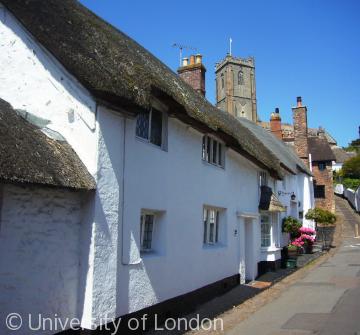Seventeenth-century Minehead homes.

The 17th century was a time of prosperity in Minehead as surviving houses of the period attest.
Before the 20th century Minehead’s urban area comprised separate settlements: Higher, Lower and Quay towns. There were several large houses and a mansion with a gatehouse, three parlours, dining room, billiard room and 15 chambers was occupied by a wealthy merchant in the 1720s when Defoe described Minehead as well-built.
Although declining trade, several major fires and redevelopment in the 19th and 20th centuries have destroyed many older houses Higher Town, which still retains its identity and name, contains many survivors.
The population increase in the 17th century led people to let out furnished property and there were lodging houses at Quaytown.
By 1668 c.50 houses had been subdivided and wealthy people leased houses to sublet. Only four single storey houses were recorded but out of 225 recorded dwellings 42 had two rooms, 22 three and 36 four. Only six had more than six bedrooms but 39 had a parlour and 24 storehouses had up to two chambers over, possibly providing accommodation for servants and workers.
Probate inventories of the period shed considerable light on the interiors of several homes.
Content derived from research undertaken as part of the Victoria County History project




